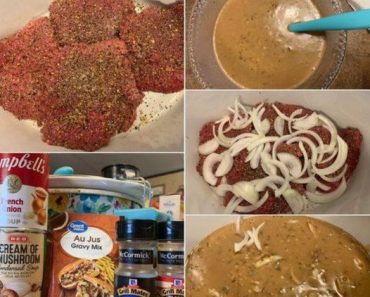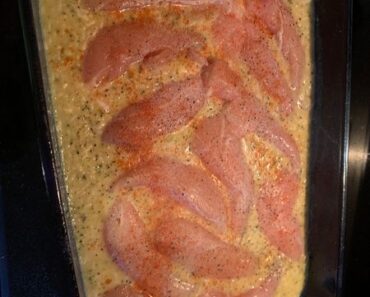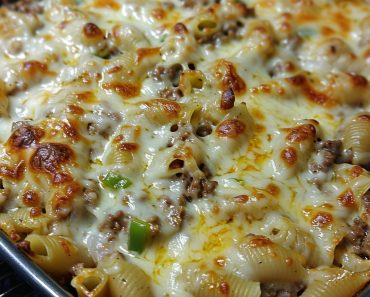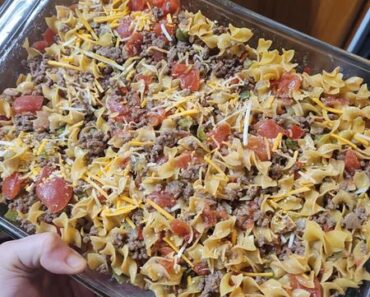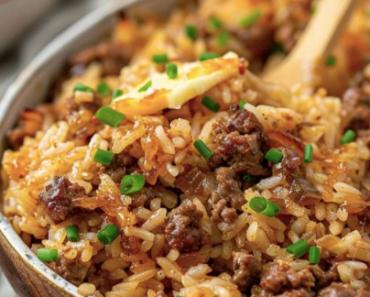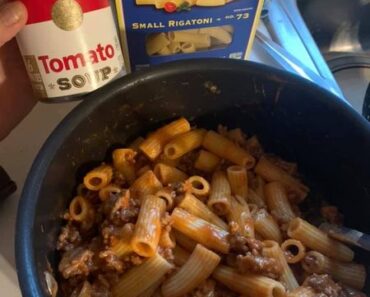
Herb-infused Stewed Potatoes:
Ingredients:
- 6-8 large potatoes, peeled and cubed into 1-inch pieces
- Salt and pepper to taste
- 2 tablespoons bacon grease or olive oil (for a vegetarian option)
- 1 pinch of dried thyme
- 1 pinch of dried rosemary
- 1 pinch of dried oregano
- 2 tablespoons all-purpose flour
- ½ cup water
- ½ cup milk
- 3 tablespoons butter
- 1 small onion, finely chopped (optional, for extra flavor)
Instructions:
- Start by peeling and cubing the potatoes into 1-inch pieces. Place them in a medium-sized pot and cover with water until it’s about 2 inches above the potatoes.
- Bring the pot to a boil and cook the potatoes until they are just fork-tender, not falling apart. This should take about 10-15 minutes.
- Once the potatoes are cooked, reduce the heat to low and keep them in the same water.
- In a separate bowl, whisk together the flour and half cup of water until the flour is dissolved.
- Carefully pour the dissolved flour mixture into the pot with the potatoes, stirring constantly to avoid lumps.
- Allow the mixture to simmer for a few minutes until it starts to thicken.
- Add in the milk, salt, pepper, dried thyme, rosemary, oregano, and butter (or bacon grease if using). Stir well to combine.
- Optionally, sauté the chopped onion in a separate pan with a bit of butter or oil until translucent and add it to the pot for extra flavor.
- Let the stewed potatoes simmer for another 5-10 minutes, stirring occasionally, until the flavors are well combined and the sauce has thickened to your desired consistency.
- Taste and adjust the seasoning if necessary, then serve hot with your favorite side dishes like cornbread and black-eyed peas.
This Herb-infused Stewed Potatoes recipe adds a delicious depth of flavor to the classic Southern dish, making it a perfect comfort food for any occasion. Enjoy!
Here are some tips to ensure your Herb-infused Stewed Potatoes turn out perfectly:
- Choose the Right Potatoes: Look for starchy potatoes like Russets or Yukon Golds, as they hold up well during cooking and absorb flavors nicely.
- Uniform Cubes: Try to cut the potatoes into uniform 1-inch cubes. This ensures even cooking and a consistent texture in the final dish.
- Don’t Overcook: Be careful not to overcook the potatoes initially. You want them just fork-tender, not mushy, as they’ll continue to cook slightly in the stewing process.
- Use Fresh Herbs if Available: While dried herbs work perfectly fine, if you have fresh thyme, rosemary, or oregano on hand, feel free to use them for an extra burst of flavor.
- Adjust Seasonings to Taste: Taste the stewed potatoes before serving and adjust the seasonings as needed. Everyone’s palate is different, so feel free to customize the salt, pepper, and herb levels to your liking.
- Control Thickness of the Sauce: If you prefer a thicker sauce, add a bit more flour-water mixture. Conversely, if you want a thinner consistency, add a bit more water or milk until it reaches your desired thickness.
- Enhance Flavor with Onion: Sautéing onions separately before adding them to the stewed potatoes can enhance the overall flavor profile of the dish. It’s optional but highly recommended for an extra layer of taste.
- Let Flavors Develop: Allow the stewed potatoes to simmer for a few minutes after adding all the ingredients. This gives the flavors time to meld together and develop a rich, savory taste.
- Serve Hot: Herb-infused Stewed Potatoes are best served hot, alongside your favorite Southern sides like cornbread and black-eyed peas. They make a delicious and comforting meal that’s perfect for any occasion.
With these tips in mind, you’ll be able to whip up a batch of delicious Herb-infused Stewed Potatoes that are sure to impress your family and friends. Enjoy
Can I use other herbs besides thyme, rosemary, and oregano?
Absolutely! Feel free to experiment with other herbs like sage, parsley, or basil to customize the flavor to your liking.
Can I leave out the bacon grease or olive oil?
Yes, you can omit the bacon grease or olive oil if you prefer a lighter dish. The butter in the recipe will still provide richness and flavor.
Do I have to peel the potatoes?
Peeling the potatoes is recommended for a smoother texture, but you can leave the skins on if you prefer a more rustic dish.
Can I use a different type of flour?
Yes, you can use alternative flours like whole wheat flour or gluten-free flour if you have dietary restrictions.
What if I don’t have dried herbs?
Fresh herbs can be used instead of dried ones, but you may need to adjust the quantities as fresh herbs are more potent.
Can I use chicken or vegetable broth instead of water?
Certainly! Using broth will add even more flavor to the stewed potatoes.
Is it necessary to simmer the potatoes in the same water after boiling?
Simmering the potatoes in the same water helps retain their flavor and prevents them from drying out.
How long can I store leftovers?
Leftover stewed potatoes can be stored in an airtight container in the refrigerator for up to 3-4 days.
Can I freeze stewed potatoes?
Yes, you can freeze stewed potatoes for up to 3 months. Just make sure to thaw them in the refrigerator before reheating.
What can I serve with herb-infused stewed potatoes?
They pair well with a variety of dishes such as grilled chicken, roasted vegetables, or a fresh garden salad.
Can I make this recipe dairy-free?
Yes, you can use non-dairy milk and vegan butter to make the recipe dairy-free.
How can I make the sauce thicker?
You can adjust the thickness of the sauce by adding more flour or simmering the potatoes for a longer period.
Can I add cheese to this recipe?
Absolutely! Adding grated cheese like cheddar or parmesan can add an extra layer of flavor to the dish.
Is it okay to skip the onion?
Yes, the onion is optional and can be omitted if you prefer a milder flavor.
Can I make this recipe in a slow cooker?
Yes, you can adapt the recipe for a slow cooker by cooking the potatoes on low for 4-6 hours or until tender, then adding the remaining ingredients and cooking for an additional hour





